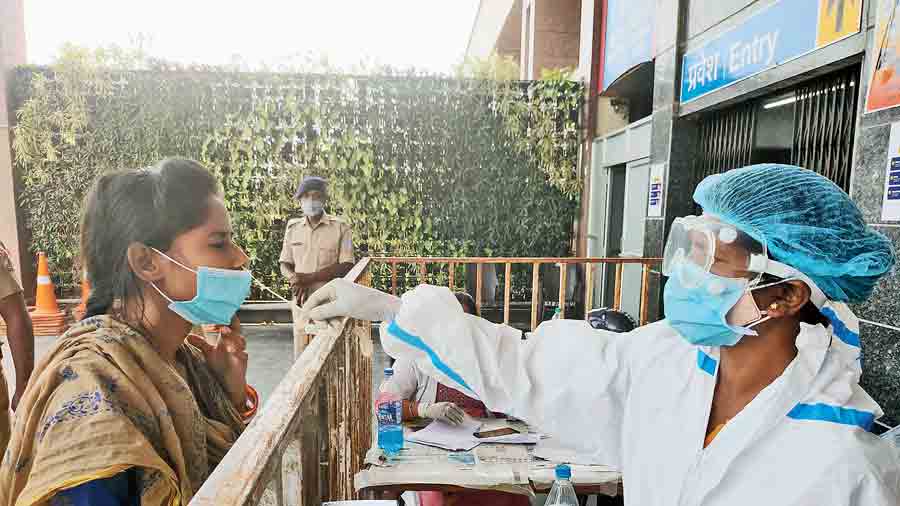India on Monday recorded 83,876 new Covid-19 infections, the first time in over a month that count has dropped below 100,000, with the surges past their peaks in all the states and the country’s third wave receding for nearly three weeks.
The nationwide number of districts with worryingly large epidemics — measured by weekly test positivity rates higher than 10 per cent — had by Monday reduced to 221 from 409 two weeks ago, according to the Union health ministry’s data.
Sunday’s count of 83,876 new cases coincided with a fall in diagnostic tests — from 1.44 million tests on Saturday when health authorities recorded around 107,000 new infections to about 1.115 million tests on Sunday.
A month ago, amid a sharply rising wave, daily infection counts had increased from 90,928 on January 6 to 117,100 on January 7.
Health experts believe that the steady decline in India’s count of new infections for over 15 days and genome sequencing data suggest that the omicron variant is running out of people to infect.
“Daily Covid-19 cases have peaked in every state and the seven-day average count of active cases is declining in every state, including Kerala,” Rijo John, a health economist and adjunct professor at the Rajagiri College of Social Sciences, Kochi, tweeted.
The nationwide count of currently active Covid-19 cases on Monday stood at 1.1 million, compared to around 1.9 million on January 20.
Rural districts account for a large proportion of districts where test positivity rates — the proportion positive among those tested — remain higher than 10 per cent, in line with forecasts that the infection would move into smaller towns and villages after sweeping the cities.
The third wave’s peak count of around 347,000 new infections on January 20 has been significantly lower than predictions by several research groups that at its peak, India would have anywhere between 400,000 and 900,000 daily infections.
Scientists say it is unclear why the wave fuelled by the fast-spreading, immune-evasive omicron in India did not reach the predicted higher peaks. But health experts say a large proportion of people infected by omicron probably remained asymptomatic and did not seek tests.
Among the patients who developed symptoms, the vast majority did not need extra oxygen or hospitalisation. Health officials have attributed this to protection from severe disease resulting from immune responses generated by prior infection or vaccination or both.
India had by Monday administered 1.7 billion doses of Covid-19 vaccines. About 734 million, or around 77 per cent of adults in the country, are fully vaccinated with two doses. And about 14.5 million people aged 60 years or older have taken booster jabs.











